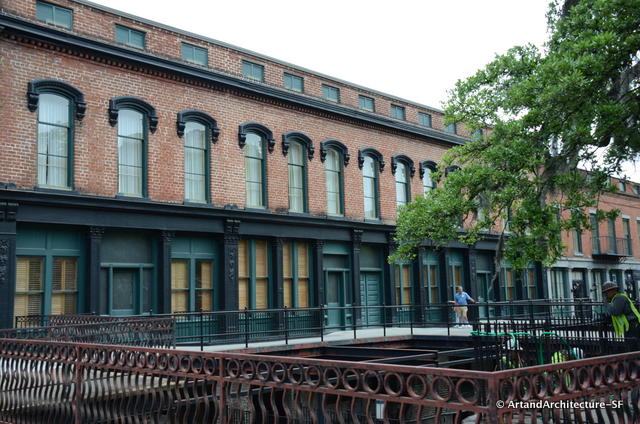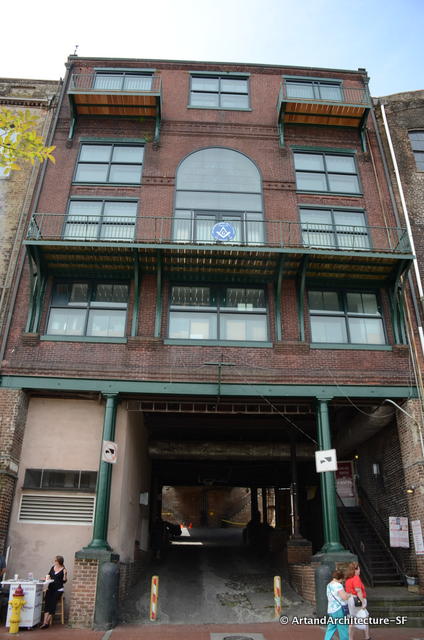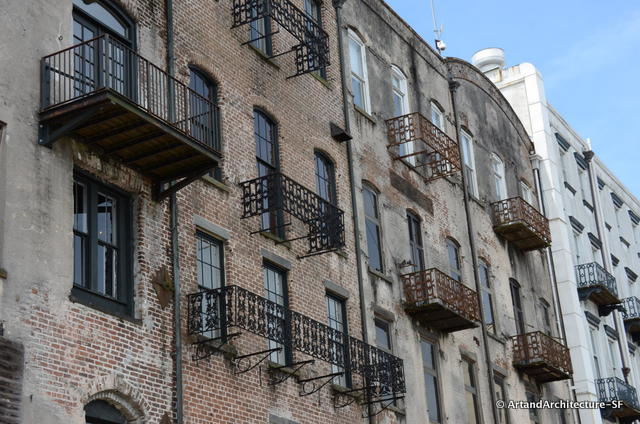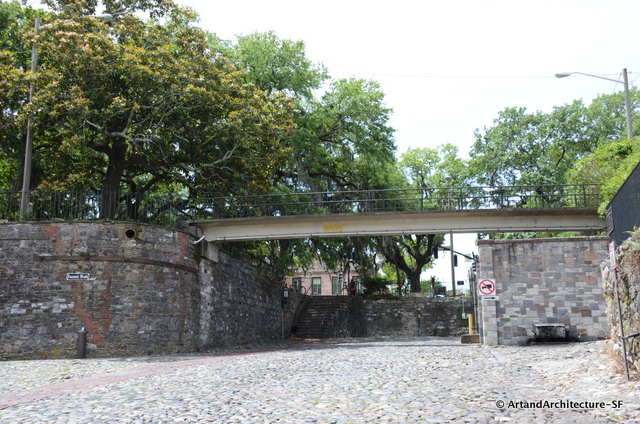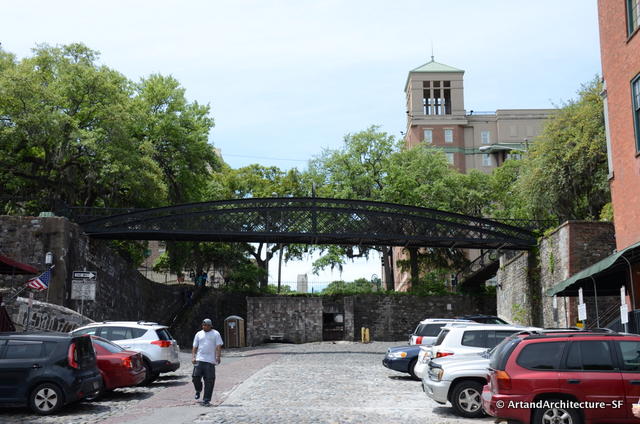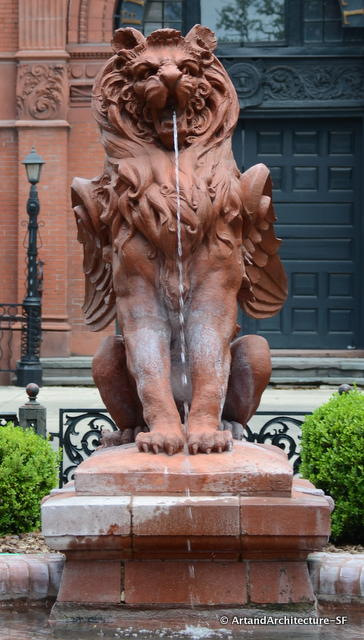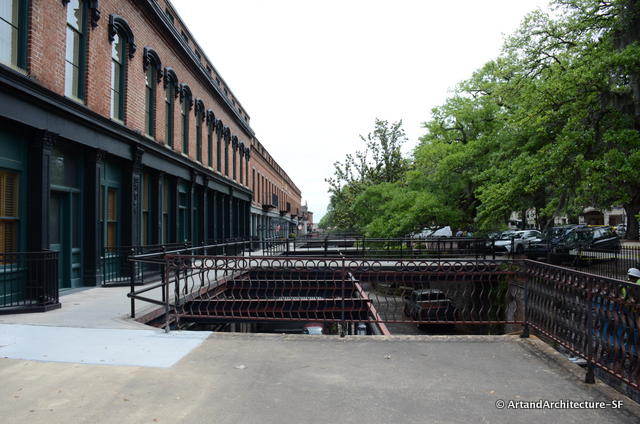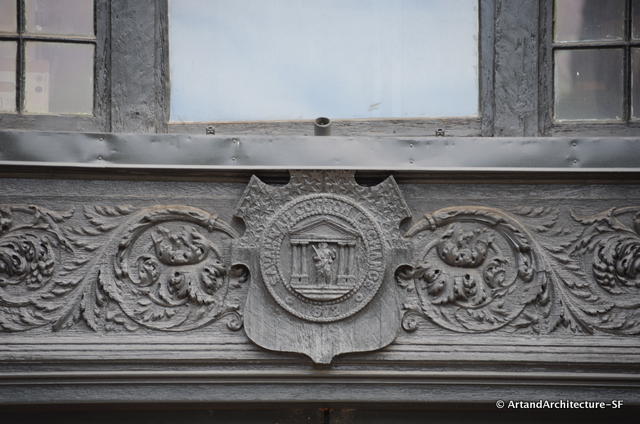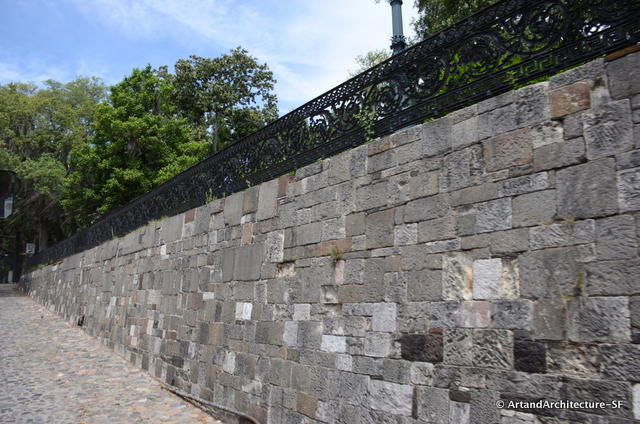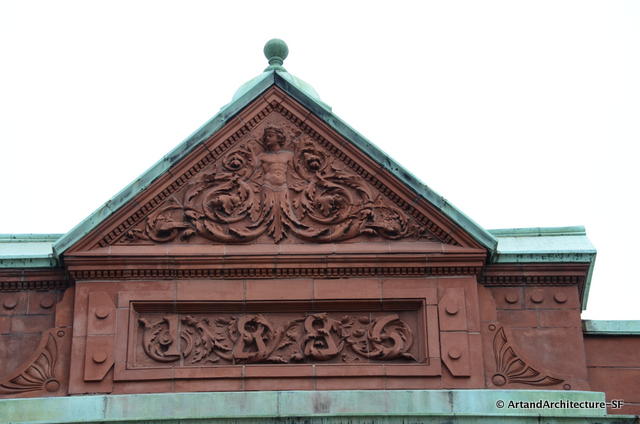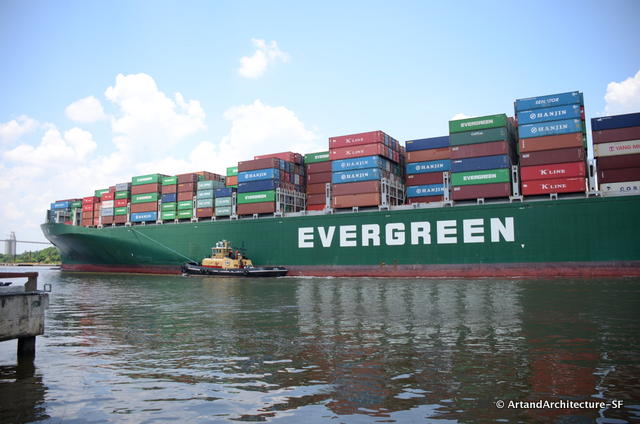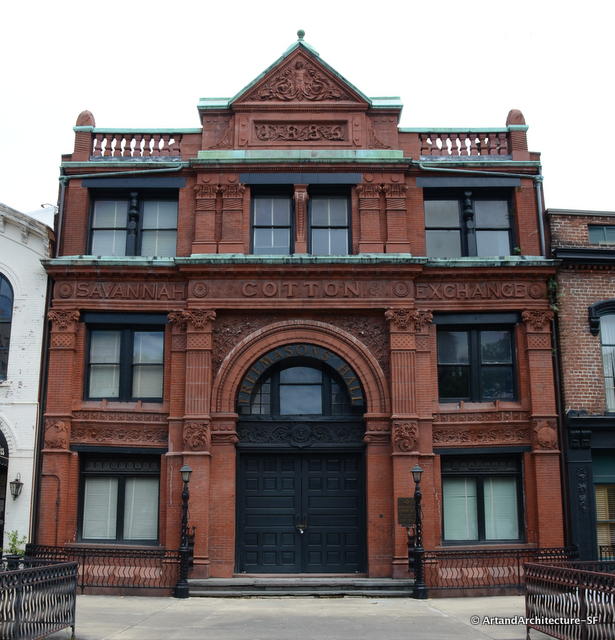May 2015
Savannah, Georgia is like other towns in the United States that have a plethora of historic architecture. They have more houses to tour than is humanly possible and more historical groups than can be counted on both hands and all toes.
Savannah suffered greatly in the beginning of the second half of the 20th century, and without the foresight and forcefulness of a few brave souls that fought to preserve architecture, it would look very different than it does today.
There are many great homes that have been saved, and urban planning that is second to none, but I wanted to talk about what I believe, is my favorite location.
I say location, because the Savannah Cotton Exchange is a stunning Romanesque Revival building that anchors what is called Factors’ Walk.
The Cotton Exchange was first established in 1872 as a place for the cotton factors and merchants to meet and decide the price of cotton.
The Savannah Cotton Exchange Building was built a little over a decade later, in 1886, by Boston architect William G. Preston.
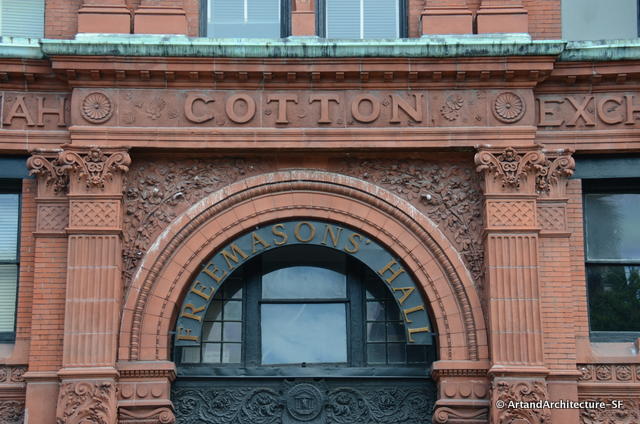 This red brick building with its terra cotta façade, iron window lintels and copper finials and copings was deliberately designed to stand out from the buildings around it to to show off the prominence of the cotton industry.
This red brick building with its terra cotta façade, iron window lintels and copper finials and copings was deliberately designed to stand out from the buildings around it to to show off the prominence of the cotton industry.
The cotton exchange was one of the first major buildings to be constructed entirely over a public street.
Savannah’s port was a center of cotton trading and export in the South, the product of slave labor before the Civil War and impoverished sharecroppers after the war. This cotton was shipped to markets all over the world.
Three months after Savannah‘s founding (February 12, 1733), the first ship to visit – the James – anchored. By June 1735, the first boat was loading and taking things from the new colony back to England. By 1755, there were nine square-rigged ships and 43 schooners and sloops sailing from the port, loaded with things like indigo, wine, silk and potash.
Between the end of the Revolutionary War in 1783 and the beginning of the American Civil War in 1861, cotton was the major product of the South, and Savannah was to benefit directly from that fact. The first shipment of cotton from Savannah took place in 1784 – eight bags sent to Liverpool, England, and, legend has it, seized by authorities who could not believe so much cotton could have been raised in the United States.
In 1793, after Eli Whitney perfected the cotton gin at Mulberry Grove, a plantation just west of Savannah, exports skyrocketed. Shipments from Savannah reached 90,000 bales per year in 1820, with revenues around $14million.
By 1855, exports through Savannah had risen to $20.1 million, 90% of it was cotton.
William Makepeace Thackery wrote of Factors’ Walk, – where cotton factors or commission merchants inspected and bid on baled cotton stacked below. Sampling, grading and storage took place in the brick buildings that architect Charles Clusky had built for the cotton factors and brokers and merchants at the rivers edge. There was Stoddard’s Range, brand new then, accessible from the decorative cast iron walks and bridges on Bay Street and from the new riverside cobblestone walk.
During the 1700s, factors and traders had conducted their business from the decks of ships and the wharves along the river. This area was 40 feet below the level of the town. The Exchange Building and the surrounding warehouses and offices built at the foot of the bluff, were built tall enough to access both levels. These buildings were connected to Bay Street by wooden bridges and cast-iron arches.
The terracotta lion in front of the Exchange was installed in 1889. (A drunk-driver destroyed the original and a cement replica was installed in 2010.)
In 1915, the cotton-destroying boll weevil invaded Georgia and eventually destroyed half of the state’s cotton. By the 1920s King Cotton was dead.
The Cotton Exchange finally closed business in 1952. In 1974, the Freemasons purchased the remaining lease on the Cotton Exchange building. Their Lodge (Solomon’s), which now uses the building, claims to be the oldest continually operating lodge in the United States.
In the 1850s, erosion became a factor in this area. A retaining wall was built around Factors’ Walk. The retaining wall was built of ballast rock. Built between 1855 and 1869, it not only helped reduce the eroding, forty-foot high sandy bluff but also made use of the many tons of stone stacked along the river front. The builder of the wall was an Irish immigrant named Michael Cash.
If you are heading down to Factors’ Walk I will warn you, it sits amongst many, many bad tourist shops and bars. I am sure that there are some excellent places to dine, and some fine objects to be purchased, but one will have to sift through the t-shirts to find them. A stroll along the river, however, will yield a myriad of delightful art pieces, and a jaw dropping reaction to the amount of shipping traffic occurring on the river.
The trip is worth it.

